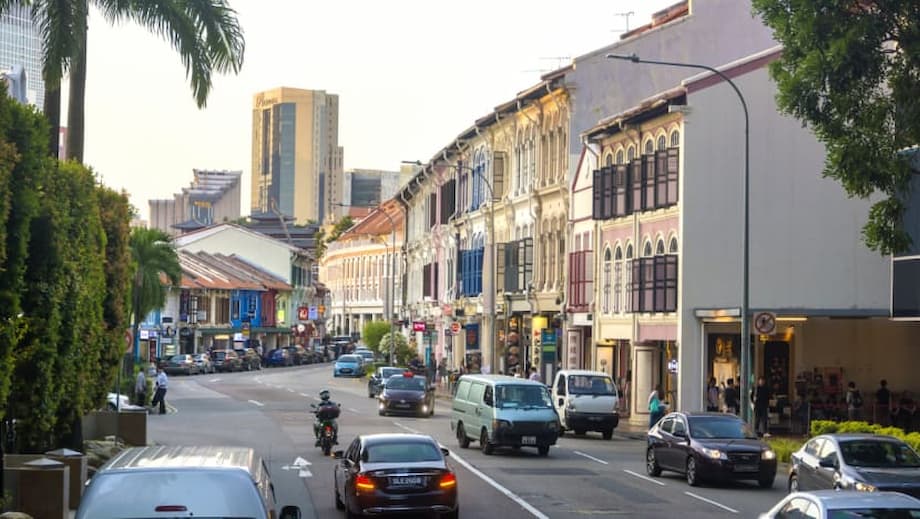Singapore’s Retail Rent Crisis: What’s at Stake?
Singapore’s vibrant retail landscape is under threat. In recent years, a wave of beloved small businesses—bakeries, bookstores, independent gyms, and specialty shops—have shuttered their doors, citing unsustainable rent hikes as the primary culprit. While some see this as the natural churn of the free market, others argue that unchecked rental increases are hollowing out the city’s unique character and entrepreneurial spirit. The debate over whether—and how—the government should intervene has reached a fever pitch, with business owners, industry groups, policymakers, and the public weighing in on the future of Singapore’s retail scene.
- Singapore’s Retail Rent Crisis: What’s at Stake?
- How Did We Get Here? The Mechanics of Retail Rent Hikes
- Who Is Most Affected? The Human Cost of High Rents
- Why Are Landlords Reluctant to Lower Rents?
- Public Sentiment and Grassroots Calls for Reform
- Policy Options: What Can Singapore Do?
- International Lessons: What Have Other Cities Tried?
- The Broader Economic Impact: Beyond the Shopfront
- Industry Perspectives: The Ongoing Policy Debate
- In Summary
How Did We Get Here? The Mechanics of Retail Rent Hikes
Commercial rents in Singapore have always been a challenge for small businesses, but the problem has intensified in recent years. The abolition of the Control of Rent Act in 2001 removed formal rent controls, leaving market forces to dictate prices. Landlords, including major real estate investment trusts (REITs) and government-linked companies, have strong incentives to push rents higher. Higher rents not only increase immediate income but also boost property valuations, enabling better financing and higher resale prices.
This dynamic is particularly acute in prime locations and gentrifying suburbs, where demand is high and supply is limited. Landlords can afford to leave units vacant, waiting for deep-pocketed tenants—often international chains or well-capitalized local brands—willing to pay premium rates. As a result, small businesses are squeezed out, unable to absorb sudden rent spikes or compete with larger players.
Recent cases illustrate the severity of the issue. Flor Patisserie, a Japanese-inspired bakery, closed its Siglap Drive outlet after facing a 57% rent increase. The landlord demanded $8,500 per month for a location far from MRT access, citing “market rates” based on asking rents for empty units rather than actual transaction prices. Nearby businesses were paying significantly less, highlighting the disconnect between investment-driven property valuation and what local businesses can sustain.
Are Rents Really Rising? The Data Dilemma
Official data from the Urban Redevelopment Authority (URA) and property consultancies like Knight Frank show that average retail rents in the Central Region have remained relatively flat since 2020. For example, Knight Frank’s Q1 2025 report found island-wide prime retail rents rose just 0.3% quarter-on-quarter, with Orchard Road rents up 2.7% and city fringe rents down 0.3%. Suburban rents saw only a 0.3% uptick.
However, these figures only reflect executed leases, not asking rents, and may mask sharp increases in specific areas or for certain types of tenants. Many business owners report that the “market rate” cited by landlords is often based on speculative asking prices, not actual deals. The lack of granular, transparent data makes it difficult to assess the true scale of rent hikes and their impact on small businesses.
Who Is Most Affected? The Human Cost of High Rents
For small and micro businesses, rent can consume 30% to 50% of revenue, leaving little room for profit or reinvestment. Unlike large chains, these businesses operate on thin margins and cannot easily pass costs to consumers or absorb sudden increases. The result is a steady erosion of local diversity, as unique shops and eateries are replaced by franchises and international brands.
In 2024 alone, over 3,000 food and beverage (F&B) establishments closed—the highest number since 2005. The F&B sector, in particular, has seen a churn of openings and closures, with 3,793 new outlets launched but many unable to survive beyond their first lease. Retailers like Nicher bakery and Neue Fit gym have gone public with their struggles, citing rent hikes of 15% to 57% and warning that further increases could force them out of business.
Business owners and industry groups argue that this trend is not just about economics—it’s about the kind of city Singapore wants to be. Small businesses offer more than goods and services; they foster community connections, support local employment, and contribute to the city’s cultural fabric. Their loss risks turning Singapore’s neighborhoods into sterile, homogenous spaces dominated by global chains.
Why Are Landlords Reluctant to Lower Rents?
Landlords, especially those managing malls through REITs, face their own pressures. High occupancy rates and strong demand allow them to maintain or raise rents, even if it means some units remain vacant for extended periods. The focus on maximizing short-term rental yields often outweighs considerations of long-term business sustainability or neighborhood vibrancy.
Some landlords argue that rent control or heavy-handed intervention could backfire, reducing investment in retail spaces and leading to lower-quality offerings. They point to the need for flexibility in responding to market conditions and warn that artificial caps could create distortions, as seen in some rent-controlled housing markets.
The Occupancy Cost Debate
Industry leaders like CapitaLand’s Ervin Yeo have sparked debate by citing “Occupancy Cost” ratios—measuring rent as a percentage of sales—as evidence that rents remain sustainable for most tenants. Critics counter that these averages mask the struggles of small businesses, which may face higher ratios and additional fees not captured in headline figures. They also argue that stable ratios can hide the fact that businesses are passing costs to consumers, fueling inflation and reducing spending power.
Public Sentiment and Grassroots Calls for Reform
The issue has galvanized public opinion. The Singapore Tenants United for Fairness (SGTUFF), representing over 700 local business owners, released a white paper calling for urgent rental reforms. Their recommendations include:
- Capping rental lease renewals and linking increases to the Consumer Price Index (CPI)
- Allocating more prime retail spaces to local businesses
- Penalizing landlords who leave shop units vacant for over three months
- Imposing additional property taxes or restrictions on foreign commercial tenants
- Reducing foreign worker quotas and increasing levies for non-local operators
SGTUFF’s proposals draw inspiration from international practices in countries like Japan and Sweden, where rent increases are indexed to inflation, and from cities like San Francisco, which imposes a Commercial Vacancy Tax to discourage landlords from holding out for higher rents.
Public sentiment is largely supportive of intervention, with many netizens sharing stories of local businesses closing and being replaced by international brands. Some, however, defend the current system, arguing that rents are driven by supply and demand and that e-commerce poses a bigger threat to brick-and-mortar stores.
Policy Options: What Can Singapore Do?
Singapore has a long history of pragmatic intervention in key markets, from housing to labor. The question is whether commercial rents have reached a point where government action is necessary to prevent broader negative impacts on the economy and society.
Targeted Rent Controls and Lease Protections
Some experts and business groups advocate for targeted, transparent interventions rather than blanket rent controls. Possible measures include:
- Limiting rent increases or providing lease protections in specific precincts or for certain business types
- Linking rent escalations to the CPI to stabilize renewals while preserving landlords’ real returns
- Introducing a modest vacancy surcharge or tiered property tax to discourage landlords from leaving spaces empty
- Strengthening the voluntary Code of Conduct for Leasing of Retail Premises and making it legally enforceable
These approaches aim to balance the interests of landlords and tenants, preserving market flexibility while supporting small businesses and neighborhood diversity.
Urban Design and Data Transparency
Urban design can also play a role. More flexible zoning could allow underused office space to be repurposed for retail, increasing supply and easing pressure on rents. Better, more granular rent monitoring would enable smarter, more targeted interventions and help policymakers identify areas most at risk of losing local businesses.
Innovative Support Schemes
Beyond regulation, there are creative ways to support small retailers. The Retail Maverick Challenge, launched by Enterprise Singapore and CapitaLand, offers up to a year of free rent and financial support to local brands with innovative concepts. Such initiatives allow retailers to test new ideas without the pressure of long-term leases and inject fresh energy into malls, which are increasingly being reimagined as lifestyle destinations.
International Lessons: What Have Other Cities Tried?
Singapore is not alone in grappling with the challenges of rising commercial rents. Cities around the world have experimented with various interventions to protect small businesses and preserve urban vibrancy.
- New York City: The proposed Small Business Jobs Survival Act would give tenants more bargaining power in lease renewals, though it faces opposition from property owners.
- Seoul: Commercial Area Preservation Zones use rent controls and incentives to retain small tenants and maintain neighborhood diversity.
- San Francisco: The Commercial Vacancy Tax penalizes landlords who leave retail spaces empty for extended periods, encouraging them to lease to local businesses at sustainable rates.
- Japan and Sweden: Rent increases for commercial properties are often indexed to inflation, providing predictability for tenants and landlords alike.
While these interventions have their own challenges and limitations, they demonstrate that action is possible and that markets can be shaped to serve broader social and economic goals.
The Broader Economic Impact: Beyond the Shopfront
The consequences of unchecked rent hikes extend beyond individual businesses. High commercial rents translate to higher consumer prices, as businesses pass on costs. This fuels inflation and reduces the spending power of ordinary Singaporeans. When small businesses struggle or close, job creation and wage growth suffer, and opportunities for innovation and entrepreneurship are stifled.
Singapore’s reliance on real estate as an economic driver is now proving counterproductive. The risk is a “rentier economy” where wealth is concentrated among landlords and property owners, while productive enterprise and local creativity are squeezed out. If left unaddressed, this could lead to long-term economic stagnation and a loss of the city’s unique identity.
Industry Perspectives: The Ongoing Policy Debate
The debate over retail rent intervention is far from settled. Landlords and property developers warn that heavy-handed controls could deter investment and reduce the quality of retail spaces. They advocate for market-driven solutions, such as temporary reductions in development charges to support urban rejuvenation, and emphasize the need for partnerships between mall operators and retailers.
Business owners and tenant groups, meanwhile, call for stronger regulatory mechanisms, greater transparency in rent-setting, and recognition of the social value of local businesses. They argue that the current power imbalance between landlords and tenants is unsustainable and that without intervention, Singapore risks losing its retail soul.
Policymakers are caught in the middle, seeking to balance economic efficiency with social cohesion. Some suggest piloting rent stabilization in districts important for cultural and entrepreneurial diversity, while others propose incentives for landlords who lease to local businesses or maintain long-term tenancies.
In Summary
- Singapore’s small businesses are under pressure from rising commercial rents, with many forced to close or relocate.
- Official data shows flat average rents, but business owners report sharp increases in specific areas and for certain tenants.
- Landlords have strong incentives to raise rents, often prioritizing short-term yields over long-term sustainability.
- Industry groups and the public are calling for targeted interventions, such as rent caps, vacancy taxes, and support for local businesses.
- International examples show that carefully designed policies can help preserve urban diversity without distorting markets.
- The debate continues, with policymakers seeking a balance between market logic and community needs to ensure Singapore remains a vibrant, inclusive city.




